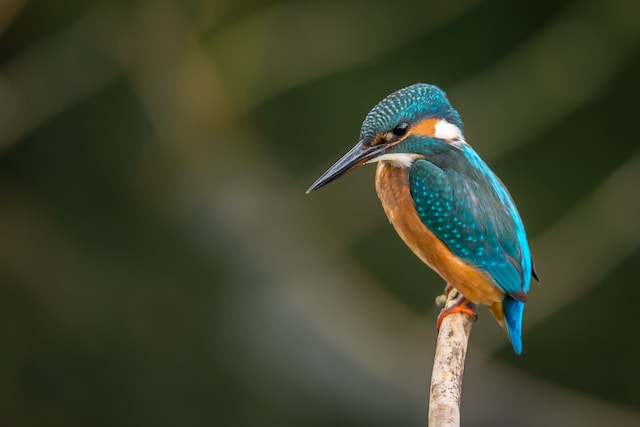In recent decades, the impact of human industrial activities on avian life has been alarming. According to data from organizations like the National Audubon Society, approximately 3 billion North American birds have disappeared since 1970. This represents a staggering decline of nearly 30% of the total bird population on the continent. Habitat destruction, driven by urban expansion and deforestation, remains a primary driver of this decline. Moreover, pollution from industrial processes, including mining and manufacturing, has led to severe ecological disruptions, affecting birds through habitat contamination and food chain disruptions. Climate change, exacerbated by industrial emissions, has also resulted in habitat shifts and food source mismatches, further imperiling avian species. These harrowing statistics and concrete facts emphasize the dire consequences of human industrialization on bird populations and underscore the urgent need for conservation efforts to mitigate these trends.
Diamonds, renowned for their dazzling brilliance, have long captivated the world’s attention. Yet, the glittering allure of these precious gems conceals a darker tale—a tale of destruction and harm to the avian world. Diamond mining, a major global industry, brings with it a host of ecological consequences for birds across various regions. In this article, we delve into the specific problems, facts, and figures surrounding the negative impact of diamond mining on birds.
The Global Perspective on Diamond Mining:
Environmental Impact: Diamond mining is responsible for extensive deforestation and habitat destruction, which results in a significant loss of biodiversity, impacting birds and their ecosystems.
Ecological Imbalance: Mining operations often introduce invasive species and disrupt natural habitats, leading to challenges for bird species that depend on specific ecosystems.
1. Botswana, Africa: Habitat Destruction
Botswana is one of Africa’s major diamond-producing countries. Open-pit diamond mining, particularly in the Jwaneng and Orapa mines, results in large-scale habitat destruction. This impacts bird species such as the Kori Bustard and the Tawny Eagle, both of which rely on the region’s unique semi-arid landscapes for nesting and foraging.
2. Canada: Water Pollution
Diamond mining in Canada, specifically in the Northwest Territories, often involves the release of harmful chemicals into water bodies. This water pollution affects the health of aquatic ecosystems, impacting bird species like the Common Loon and the Red-throated Loon, which rely on clean water sources for their survival.
3. Russia: Air Pollution and Noise
The Siberian region of Russia is rich in diamond deposits. Mining activities release harmful pollutants into the air and generate noise pollution, impacting bird species like the Siberian Jay and the Siberian Crane. These birds are susceptible to respiratory issues and disruptions in their communication and behavior.
4. Australia: Land Degradation
In Australia, diamond mining operations often lead to land degradation and habitat destruction. This affects bird species such as the Malleefowl and the Carnaby’s Black-Cockatoo, both of which are listed as vulnerable due to habitat loss.
5. India: Habitat Fragmentation
India, with its rich diamond reserves, faces challenges related to habitat fragmentation. The fragmented landscapes negatively impact birds like the Indian Pitta and the Great Indian Bustard, leading to population declines and increased vulnerability.
6. Worldwide Impact: Figures and Facts
– The global polished diamond market, valued at approximately $100 billion in 2023, is expected to grow further in the coming years.
– The Kimberley Process Certification Scheme, established to prevent the trade of “blood diamonds” that fund conflicts, does not address the environmental impact of diamond mining on avian life.
Efforts to Combat the Negative Impact:
Habitat Restoration: Some mining companies are investing in habitat restoration and conservation programs to mitigate the impact of their operations on birds and ecosystems.
Sustainable Practices: The move toward more sustainable diamond mining practices, such as underground mining and reduced use of harmful chemicals, aims to lessen the environmental footprint.
Legislation and Regulation: Governments and international bodies are working to strengthen environmental regulations and promote responsible mining practices in the diamond industry.
In conclusion, the world’s insatiable demand for diamonds has given rise to an industry that leaves a trail of environmental destruction, affecting avian life in numerous regions. The specific problems faced by birds due to diamond mining—habitat destruction, water and air pollution, noise, and habitat fragmentation—are dire. As the diamond mining industry continues to grow, it is essential to find a balance between the allure of these gems and the preservation of our delicate ecosystems. The survival of these birds is closely tied to the health of the planet, and it is our duty to ensure that their songs continue to grace our skies.
Sources:
National Audubon Society
International Union for Conservation of Nature (IUCN)
BirdLife International
The Cornell Lab of Ornithology
World Wildlife Fund (WWF)
Journal of Applied Ecology
Journal of Ornithology
PLOS ONE
The Wildlife Society
Environmental Science & Technology (ES&T)



